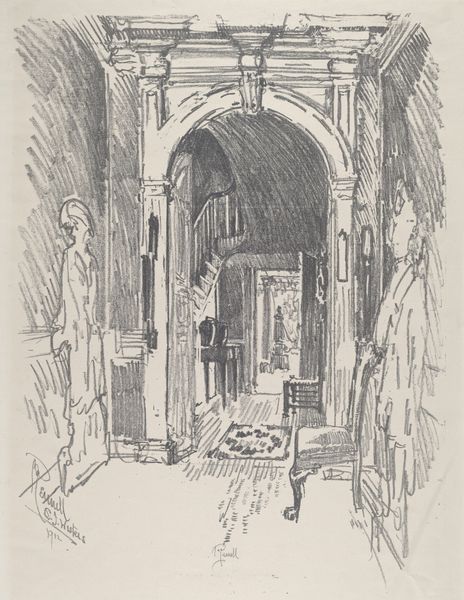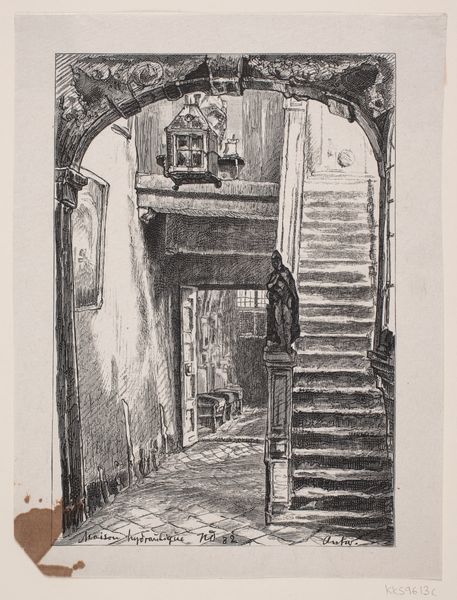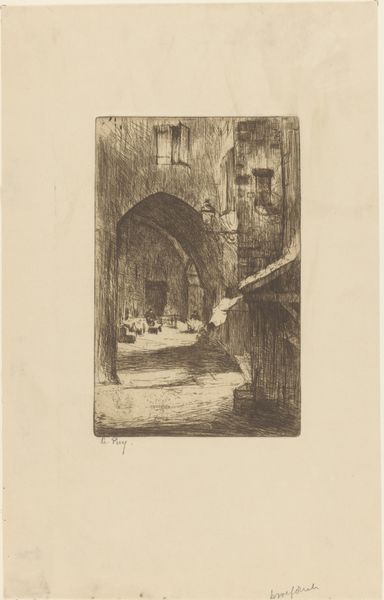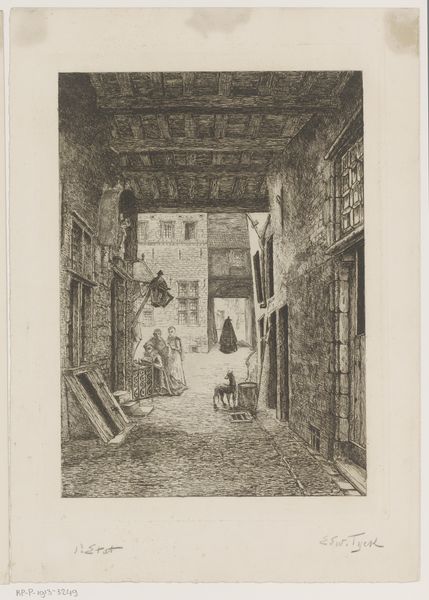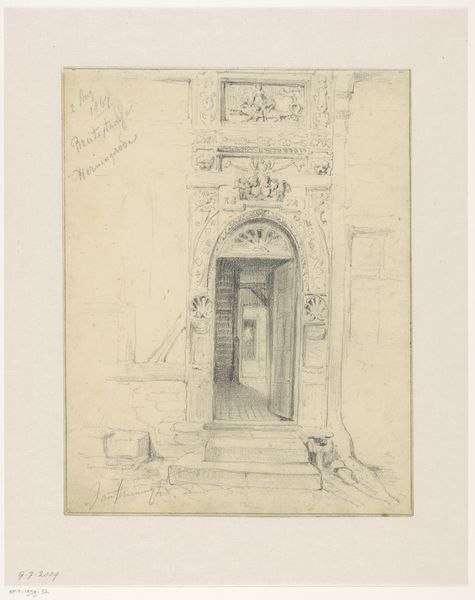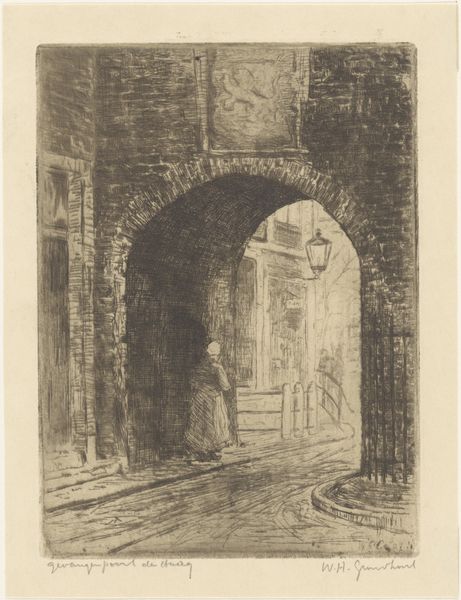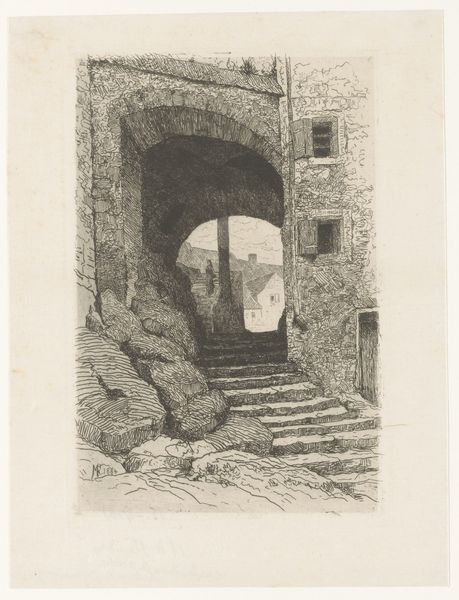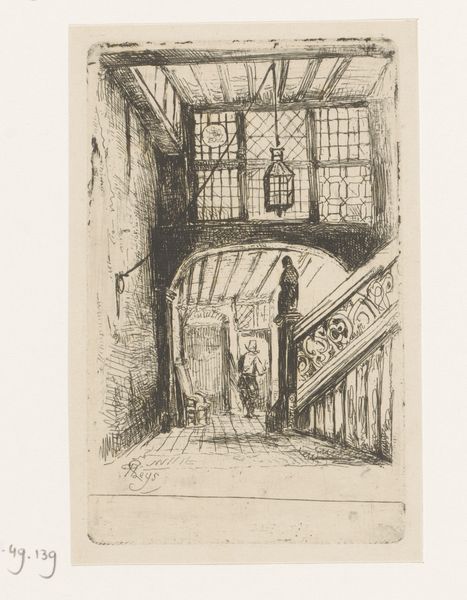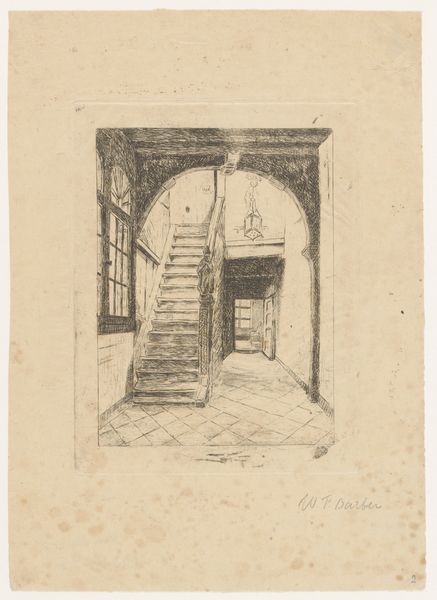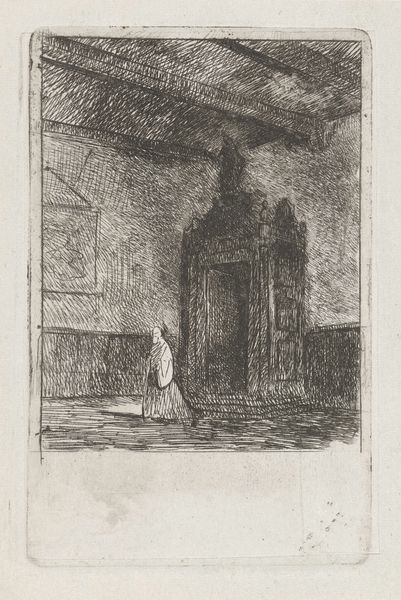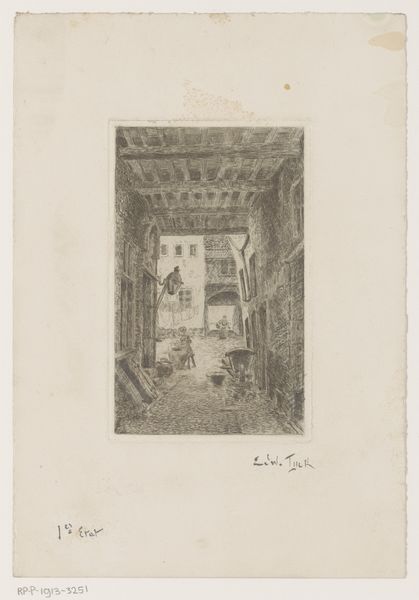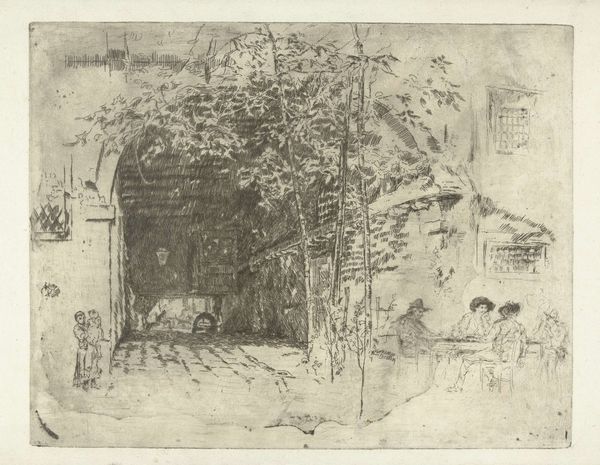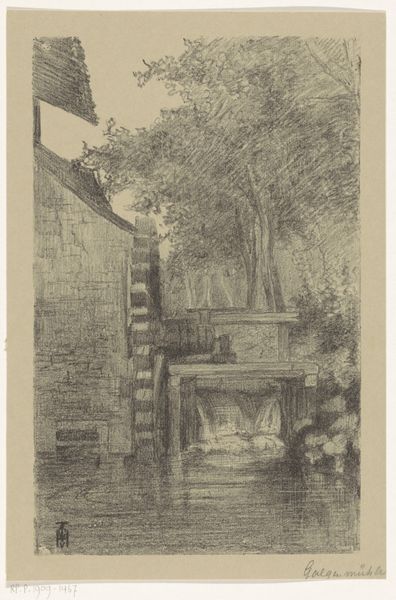
drawing, etching, ink
#
drawing
#
pen sketch
#
etching
#
pencil sketch
#
landscape
#
etching
#
ink
#
orientalism
Dimensions: height 198 mm, width 148 mm
Copyright: Rijks Museum: Open Domain
Editor: So this is Hendrik Johannes Haverman’s "Entrance to a House, possibly in Morocco," created sometime between 1867 and 1928. It’s rendered in etching, ink, and other drawing media. It feels like a quiet moment, capturing a still courtyard. What stands out to you about this piece? Curator: Well, focusing on the material aspect, the etching technique itself is significant. Look closely – the lines created by the etching needle aren't just descriptive. They indicate a deliberate, reproducible process, hinting at wider access and consumption of such images. Consider the socio-economic context of the time – what kind of audience was consuming these Orientalist scenes? Editor: So, you are saying the *production* matters as much as the scene it depicts? Curator: Absolutely. Orientalism was a marketable genre. The act of etching made it more readily available, potentially shaping the perception and consumption of Moroccan culture by a European audience. The labor involved, the materials used - these all played a part in how this image circulated and the ideas it conveyed. Consider, how might a photograph taken in the same period differ in its social and economic impact? Editor: That's a great point. The process gives it another layer of meaning about distribution. So, it's not just about Haverman's artistic vision, but the broader economic machine making these images, the role of consumerism and of cultural views it created, all at once. Curator: Precisely. The material speaks volumes. Editor: This changes my perspective, seeing it as an object of cultural consumption rather than just artistic skill. Thank you.
Comments
No comments
Be the first to comment and join the conversation on the ultimate creative platform.
